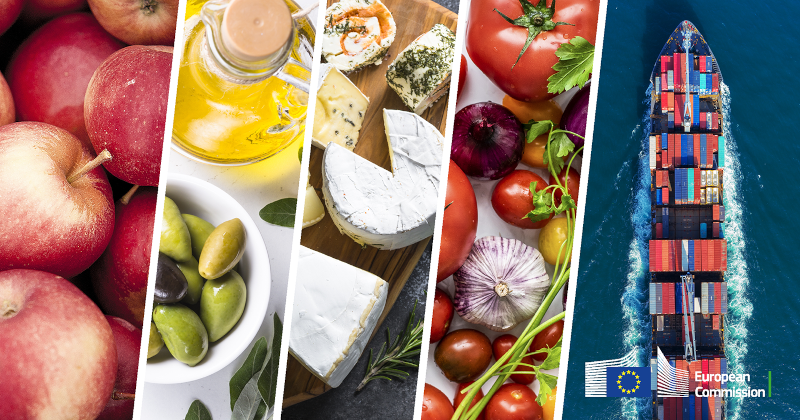
In July 2023, both imports and exports slowed down compared with June 2023. This did not impact the EU’s trade balance in agri-food products which stayed positive at €6.2 billion. The cumulative trade balance from January to July 2023 reached € 38.6 billion, which is even higher by € 7.3 billion compared with the same period last year. These are the main findings of the latest monthly agri-food trade report published today by the European Commission.
The EU’s agri-food trade is performant and well diversified, as shown in a European Commission’s report published earlier this month. Nevertheless, for certain commodities, some few partner countries represent a large share of EU exports or imports, which could lead to market instability in case trade flows are interrupted. Overall, the EU's position as the world’s top exporter and one of the top importers of agri-food products allows for balanced trade relations with third countries.
Exports
While the monthly value of EU agri-food exports in July were below their level in July last year, EU exports are still strong. The cumulative EU exports from January to July this year reached €133.5 billion, representing a 5% rise over the same time in 2022. This was driven mostly by growth in the exports of cereal preparations (+€1.5 billion, +12%), and fruit and nut preparations (+€ 1.2 billion, +21%). Exported volumes of vegetable oils, oilseeds and protein crops, and cereals also increased by 35%, 16% and 11% respectively compared to 2022.
In terms of destinations, a significant increase of exports to Türkiye can be noticed, with a value of € 846 million (+38%). Exports to the UK remain high with also a €2.7 billion increase (+10%) between January and July 2023 compared to the same period last year.
The top three destinations for EU agri-food exports between January and July of this year were the United Kingdom, the United States and China.
Imports
Much like June, EU agri-food imports continued to decrease further in July, falling to € 11.8 billion, 11% less than in June 2023 and 17% less than in July 2022. This evolution of the value of imports is explained by a decrease of import prices since the beginning of 2023, combined with the reduction of import volumes in July. The total value of imports from January to July 2023 was at € 94.9 billion, similar to 2022.
Cereal imports increased by 29% while imports of oilseeds and protein crops decreased by 11% and those of vegetable oils decreased by 27%. This has resulted in a reduction of the trade deficit for vegetable oils, as well as for oilseeds and protein crops.
Imports from Argentina decreased by € 1 billion (‑27%), in large part due to a reduction of soya meals imports, while imports from Brazil also decreased by € 892 million (-8%), with a large decrease in soya beans and coffee.
The top three origin countries for EU agri-food imports between January and July 2023 were Brazil and the United Kingdom, followed by Ukraine.
More insights as well as detailed tables are available below in the latest edition of the monthly EU agri-food trade report.
Details
- Publication date
- 26 October 2023
- Author
- Directorate-General for Agriculture and Rural Development
- Location
- Brussels
